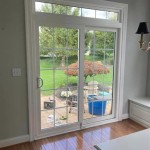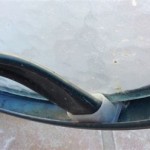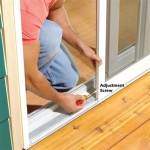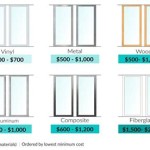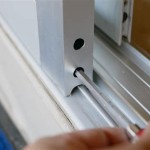How Much Does It Cost To Install Patio Pavers?
Installing a paver patio is a significant investment that can enhance the aesthetic appeal and functionality of any outdoor space. Understanding the associated costs is crucial for planning and budgeting effectively. Several factors influence the final price, making it essential to consider each aspect carefully. This article will delve into the details of paver patio installation costs, exploring the variables that impact pricing and providing a comprehensive overview to help homeowners make informed decisions.
The overall cost of installing a paver patio typically ranges from $8 to $25 per square foot. This broad range reflects the variability in materials, labor, and project complexity. Simpler projects with basic pavers and minimal site preparation may fall on the lower end of the spectrum, while more elaborate designs with premium materials and extensive excavation can significantly increase the cost. To accurately estimate the cost of a specific project, it is necessary to break down the various components involved.
The first step in determining the cost is to measure the area where the patio will be installed. This measurement, expressed in square feet, is the foundation for calculating material costs. Accurate measurements are essential to avoid over- or under-estimating the required materials, which can lead to budget overruns or project delays. Professionals typically use digital measuring tools to ensure precision.
Key Factors Influencing Paver Patio Installation Costs
Several key factors contribute to the overall cost of paver patio installation. These include the type of paver material, the size and complexity of the project, the cost of labor, site preparation requirements, and any additional features incorporated into the design. Understanding these factors allows homeowners to better anticipate the total expense and make adjustments as needed.
Paver Material: The type of paver chosen has a significant impact on the overall cost. Pavers are available in a wide variety of materials, including concrete, brick, natural stone (such as flagstone, travertine, or bluestone), and porcelain. Concrete pavers are generally the most affordable option, ranging from $3 to $10 per square foot. Brick pavers offer a classic aesthetic and typically cost between $5 and $15 per square foot. Natural stone pavers, known for their durability and unique appearance, can range from $8 to $30 per square foot, depending on the type and availability. Porcelain pavers, a newer option, are often priced between $10 and $25 per square foot due to their high durability and resistance to staining.
The selection of paver material should consider not only cost but also aesthetic preferences, durability requirements, and maintenance needs. Concrete pavers, for example, are available in a wide range of colors and styles, mimicking the look of more expensive materials. Natural stone pavers offer unparalleled beauty and longevity but require more specialized installation techniques. Porcelain pavers are highly resistant to stains and fading, making them an ideal choice for high-traffic areas.
Project Size and Complexity: The size of the patio directly correlates with the amount of materials and labor required, thereby influencing the total cost. Larger patios naturally require more pavers and base materials. Complexity also plays a crucial role; intricate designs, curves, and patterns demand more time and skill to install, increasing labor costs. Simple rectangular or square patios are typically less expensive to install than those with complex shapes or multiple levels.
Furthermore, incorporating features such as steps, retaining walls, or built-in seating can significantly increase the project's complexity and cost. These additional elements require specialized skills and materials, adding to the overall expense. When planning a paver patio, it is important to consider the desired features and how they will impact the budget.
Labor Costs: Labor costs constitute a significant portion of the total paver patio installation expense, typically ranging from $5 to $15 per square foot. The exact cost depends on the contractor's experience, the project's complexity, and the prevailing labor rates in the area. Experienced contractors with a proven track record often charge higher rates but can ensure a high-quality installation that will last for years to come.
It is crucial to obtain multiple quotes from different contractors and carefully compare their estimates. While it may be tempting to choose the lowest bid, it is important to consider the contractor's qualifications, experience, and reputation. A poorly installed paver patio can lead to problems such as settling, uneven surfaces, and drainage issues, which can be costly to repair. Checking references and reviewing online reviews can provide valuable insights into a contractor's reliability and quality of work.
Site Preparation: Proper site preparation is essential for a successful paver patio installation. This involves excavating the area to the required depth, leveling the ground, and installing a base of compacted gravel. The depth of excavation depends on the soil conditions and the intended use of the patio. In areas with poor drainage or unstable soil, additional excavation and soil stabilization may be required, increasing the cost.
The cost of site preparation can range from $1 to $5 per square foot, depending on the amount of excavation and the materials required. Removing existing structures, such as old patios or concrete slabs, can also add to the cost. It is important to ensure that the site is properly prepared to prevent settling and ensure the longevity of the paver patio.
Additional Features: Incorporating additional features into the paver patio design can enhance its functionality and aesthetic appeal but will also increase the overall cost. These features may include:
- Steps: Steps can be added to connect the patio to different levels of the yard or to provide access to doorways. The cost of steps depends on the number of steps, the materials used, and the complexity of the design.
- Retaining Walls: Retaining walls can be used to create level areas or to prevent soil erosion. The cost of retaining walls depends on their height, length, and the materials used.
- Built-in Seating: Built-in seating can provide a comfortable and stylish place to relax and entertain. The cost of built-in seating depends on the design, materials, and size.
- Fire Pits: Fire pits can add warmth and ambiance to the paver patio. The cost of fire pits depends on the type of fire pit (gas, wood-burning, or propane) and the materials used.
- Outdoor Kitchens: Outdoor kitchens can provide a convenient space for cooking and entertaining. The cost of outdoor kitchens depends on the size, features, and materials used.
- Lighting: Landscape lighting can enhance the beauty and safety of the paver patio. The cost of lighting depends on the type of lighting (low-voltage, solar, or LED) and the number of fixtures.
Breaking Down the Costs: Materials, Labor, and Other Expenses
To gain a clearer understanding of the overall cost, it is helpful to break down the expenses into distinct categories: materials, labor, and other related costs. This allows for a more granular level of analysis and facilitates better budgeting.
Materials Costs: The cost of materials includes the pavers themselves, base materials (such as gravel and sand), edging materials, and any jointing sand or sealant. As previously discussed, the price of pavers can vary considerably depending on the type and quality. Base materials typically cost between $0.50 and $1.50 per square foot, while edging materials can range from $1 to $5 per linear foot. Jointing sand and sealant are relatively inexpensive but are essential for preventing weed growth and protecting the pavers from the elements.
When calculating material costs, it is advisable to add a buffer for waste. Pavers may need to be cut to fit specific areas, resulting in some material being unusable. A general rule of thumb is to add 5-10% to the total material estimate to account for waste.
Labor Costs: Labor costs encompass the wages paid to the contractors for their time and expertise. These costs can vary depending on the contractor's experience, the project's complexity, and the local labor market. Labor typically accounts for 30-50% of the total project cost. It is important to obtain detailed quotes from multiple contractors, outlining the specific tasks included in the labor estimate. This helps ensure that the quotes are comparable and that there are no hidden costs.
Homeowners should inquire about the contractor's experience with paver patio installation and request references from previous clients. A reputable contractor will be able to provide examples of their work and offer guidance on the best materials and design options for the project. It is also important to verify that the contractor is licensed and insured to protect against liability in case of accidents or property damage.
Other Expenses: In addition to materials and labor, there may be other expenses associated with paver patio installation. These may include:
- Permits: Depending on local regulations, a building permit may be required for paver patio installation. The cost of a permit can vary depending on the location and the size of the patio.
- Excavation Equipment Rental: If the site requires extensive excavation, it may be necessary to rent equipment such as a skid steer or excavator. The cost of equipment rental can range from $200 to $500 per day.
- Delivery Fees: Delivery fees may be charged for transporting materials to the site. These fees can vary depending on the distance and the amount of materials being delivered.
- Waste Disposal: The cost of disposing of excavated soil and other waste materials may need to be considered. This can involve renting a dumpster or paying for disposal fees at a local landfill.
- Landscaping: After the paver patio is installed, landscaping may be required to blend the patio with the surrounding environment. This may include planting shrubs, flowers, or trees.
Tips for Saving Money on Paver Patio Installation
While paver patio installation is a significant investment, there are several ways to potentially reduce costs without compromising quality. Careful planning and strategic decision-making can help homeowners stay within their budget while achieving their desired outcome.
Choose Affordable Paver Materials: Opting for concrete pavers instead of natural stone or porcelain can significantly reduce material costs. Concrete pavers offer a wide range of styles and colors and can mimic the look of more expensive materials at a fraction of the price. Consider exploring different concrete paver options to find one that fits both the aesthetic preferences and the budget.
Keep the Design Simple: A simple rectangular or square patio is less expensive to install than a complex design with curves and intricate patterns. Simplifying the design can reduce labor costs and material waste. Avoid adding unnecessary features such as steps, retaining walls, or built-in seating if they are not essential.
DIY Site Preparation: Performing some of the site preparation work oneself can save on labor costs. This may include removing existing structures, excavating the area, and leveling the ground. However, it is important to have the necessary skills and equipment to perform these tasks safely and effectively. If unsure, it is best to leave the site preparation to professionals.
Obtain Multiple Quotes: Getting quotes from several different contractors is crucial for comparing prices and finding the best value. Ensure that the quotes are detailed and include all costs, including materials, labor, and other expenses. Don't automatically choose the lowest bid; consider the contractor's experience, reputation, and references.
Schedule Installation During Off-Season: Contractors may offer lower rates during the off-season (typically fall or winter) when demand is lower. Scheduling the paver patio installation during the off-season can potentially save money on labor costs. However, it is important to consider the weather conditions and ensure that they are suitable for installation.
Consider Financing Options: If financing is necessary, explore different options such as home equity loans, personal loans, or credit cards. Compare interest rates and terms to find the best financing option. Be sure to factor in the cost of financing when budgeting for the paver patio installation.
By carefully considering these factors and implementing cost-saving strategies, homeowners can effectively manage the costs associated with paver patio installation and create a beautiful and functional outdoor space that enhances the value of their property.

How Much Does A Patio Cost Installation 2024 Landscaping Network

How Much Does It Cost To Install Patio Pavers In 2024 Paver House

How Much Does It Cost To Build A Paver Patio

How Much Does It Cost To Install Patio Pavers Whitehouse Landscaping

Cost To Install A Patio 2024 Calculator

How Much Does A Paver Patio Cost 2024 Data

Paver Cost Landscaping Network

Guide How Much Does A Paver Patio Cost In 2024

How Much Do Porcelain Pavers Cost

2024 Paver Patio Cost Installation Costs
Related Posts

